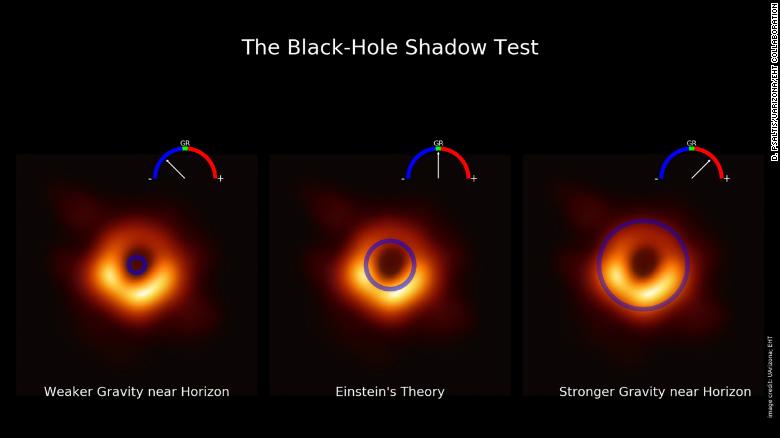The coronavirus COVID-19 pandemic once again drives home the recognition that humankind inhabits a universe harboring many mysteries at microscopic but also macroscopic levels. "Viruses" that are 1000 times smaller than a human hair and that are by definition not even "alive" can wreak havoc on our "living" biological organisms. As previously written at andiskaulins.com [moderately edited]:
"[Our] theory of the universe derives from the observation that every human being is a PART of the universe. We are neither "outside" looking "in" nor "inside" looking "out". We are inside looking inside.
Our structure -- whatever it is -- must be the same as the rest of the universe.... For those more "physically" and/or "technically" inclined, see [our] blog at Einstein's Voice, which has some thoughts on various theories of Physics [i.e. explanations as to how the universe works]."
We started the blog Einstein's Voice many years ago to support the deceased Albert Einstein's incomparable theories about how the universe works against some -- in our view -- questionable recently formulated alternative theories, such as "string theory". We adapted the blog name from the famed His Master's Voice.
Albert Einstein's "General Theory of Relativity" (to differentiate "Big Al's" Special Theory of Relativity) remains the primary cornerstone of modern physics, but overwhelming proof of the theory has been hard to come by, as we posted already in 2005 at NASA Gravity Probe-B and Einstein's General Theory of Relativity, quoting Stanford University's Bog Kahn via the Stanford Newsletter as follows:
"For the past 17 months, NASA's Gravity Probe-B (GP-B) satellite has been orbiting the Earth using four ultra-precise gyroscopes, about a million times better than the finest navigational gyroscopes, to generate the data required for this unprecedented test....
This year, physicists celebrate the 100th anniversary of Einstein's "miraculous year," in which he received his doctorate in physics from the University of Zurich and published four seminal papers, including the special theory of relativity and a paper on light that garnered him the Nobel Prize in 1921. But Einstein's crowning achievement came in 1916, with his publication of the general theory of relativity, in which he expanded the special theory of relativity to include the elusive concept of gravity. With general relativity, Einstein forever changed our Newtonian view of gravity as a force, postulating rather that space and time are inextricably woven into a four-dimensional fabric called spacetime, and that gravity is simply the warping and twisting of the fabric of spacetime by massive celestial bodies. Even though it has become one of the cornerstones of modern physics, general relativity has remained the least tested of Einstein's theories. The reason is, as Caltech physicist Kip Thorne once put it: "In the realm of black holes and the universe, the language of general relativity is spoken, and it is spoken loudly. But in our tiny solar system, the effects of general relativity are but whispers." And so, any measurements of the relativistic effects of gravity around Earth must be carried out with utmost precision. Over the past 90 years, various tests of the theory suggest that Einstein was on the right track. But, in most previous tests, the relativity signals had to be extracted from a significant level of background noise. The purpose of GP-B is to test Einstein's theory by carrying out the experiment in a pristine orbiting laboratory, thereby reducing background noise to insignificant levels and enabling the probe to examine general relativity in new ways."
As just reported, we now have the
"First photo of a black hole [and it] supports Einstein's theory of relativity" as headlined at CNN by Ashley Strickland. She writes, inter alia:
""Using the gauge we developed, we showed that the measured size of the black hole shadow in M87 tightens the wiggle room for modifications to Einstein's theory of general relativity by almost a factor of 500, compared to previous tests in the solar system," said Feryal Özel, study coauthor and University of Arizona astrophysics professor, in a statement. "Many ways to modify general relativity fail at this new and tighter black hole shadow test." [emphasis added by us]
Now that researchers know they can use images of black holes to test the theory of gravity, it opens up more possibilities for the future.
"Together with gravitational wave observations, this marks the beginning of a new era in black hole astrophysics," said Dimitrios Psaltis, lead study author and University of Arizona astrophysics professor, in a statement.
The black hole shadow test of relativity discussed in the above article is illustrated by the following explanatory graphic, which is linked here from the CNN article, with the following accompanying text (if the image fails, go to the CNN article):
"This visualization, including the first image of a black hole, shows the new gauge developed to test the predictions of modified gravity theories against the measurement of the size of the M87 shadow."

Look especially at the differing sizes of the blue circles
drawn on the black hole by the researchers,
which emphasize the theoretical differences
between Einstein's General Theory of Relativity
and those proposing alternative theories.
Even if the image above is not shown perfectly via the CNN link,
do ultimately go that CNN article to get the entire story!
For those statistically inclined,
we can say that the score here was
Albert Einstein 500 Competitors 0.
Einstein's Voice Rejoice!
____________________
Our image below was made by us
using Starry Night Pro astronomy software
and was added a few hours later
after posting the above material.
The image shows the location of M87 in the starry sky.
